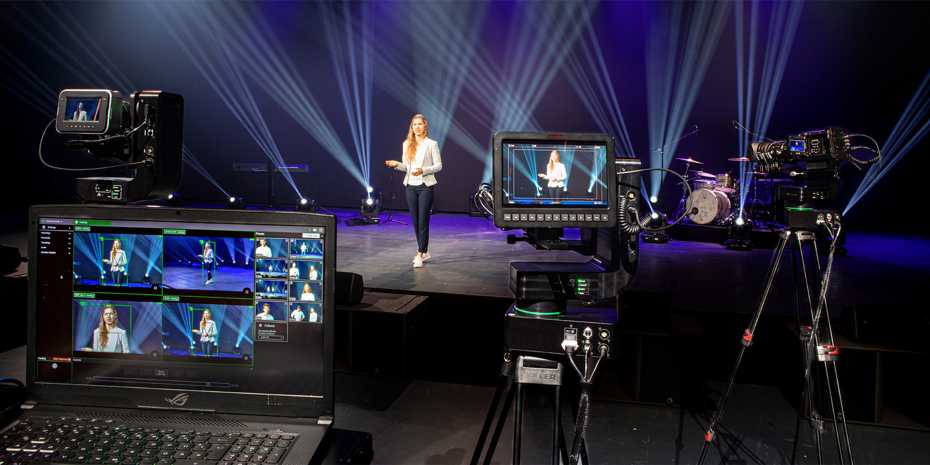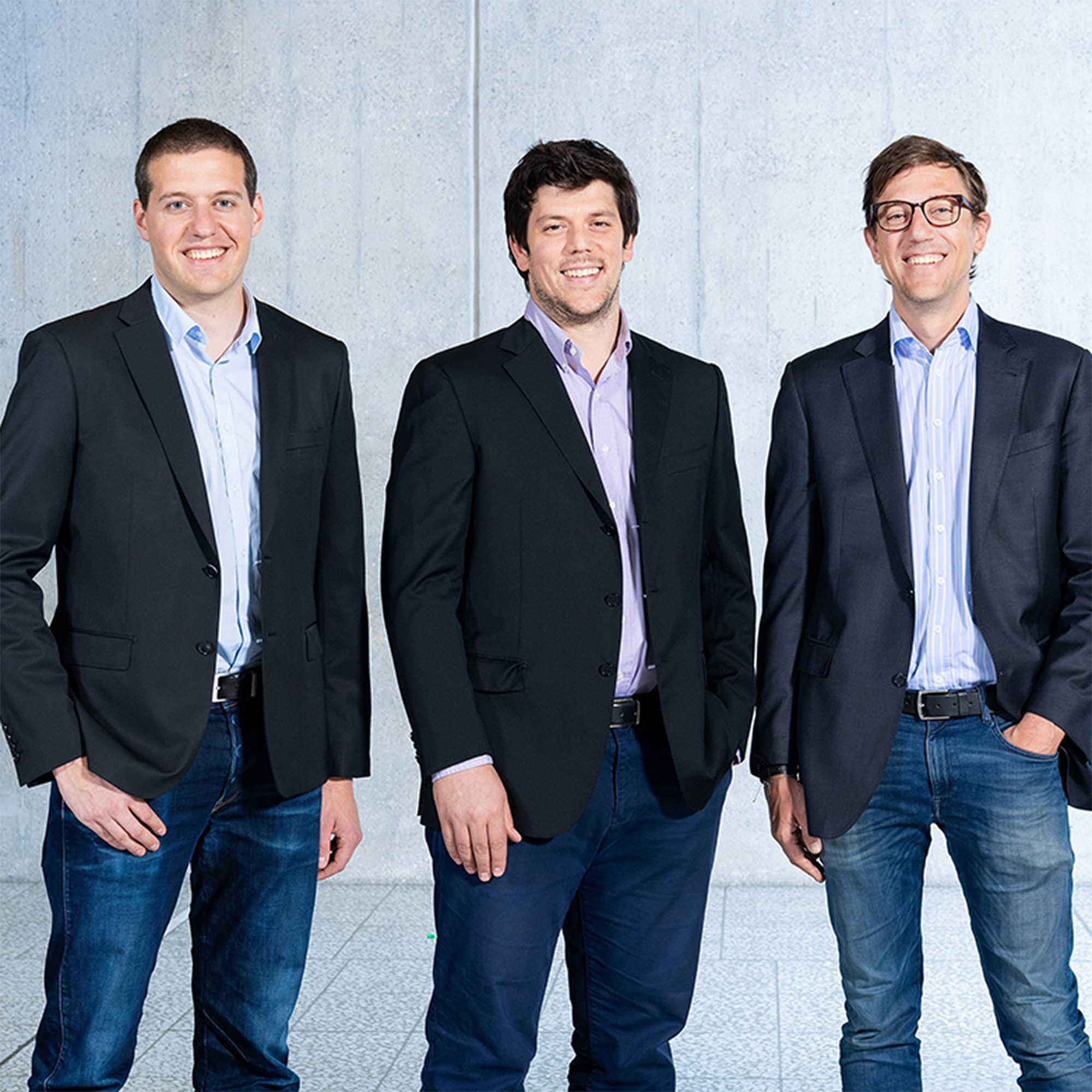The intelligent camera thinks with you
Seervision's software operates cameras as if by human hands and simplifies video transmissions. The start-up has its roots at ETH Zurich, where students once developed a clunky prototype for lecture recordings.

Thanks to the software, multiple cameras can be operated from one PC. (Image: Seervision)
The Corona crisis has given videos a strong boost as a means of communication. Meetings, presentations and even cultural events are broadcast online. If you want to stand out in the crowd of live audiovisual offerings, you need to deliver a high-quality performance. That's why more and more companies are investing in the necessary equipment and technologies to deliver a better experience and high quality. Seervision, a spin-off of ETH Zurich, is also feeling the effects of this.
Seervision develops software to automate cameras in studios. In this way, one person can effortlessly operate and control multiple cameras simultaneously. "Companies can thus produce professional videos without being afraid of the complexity of implementation or the costs," says co-founder and CEO Nikos Kariotoglou. This is exactly what companies are looking for in times of home offices.
"The world switched to online and hybrid events in one fell swoop," he says, describing the change. Until now, the spin-off's technology primarily served video production companies that were already familiar with cameras and live broadcasts. Since the beginning of the pandemic, more and more companies from various industries have become interested in it, wanting to set up their own studio, for example, to present their business figures professionally online. Thus, Seervision's market expanded from one moment to the next, "we were positively surprised by this and our sales talks became much easier," says Kariotoglou.
Software controls multiple cameras
At the core of their solution is software that combines artificial intelligence, image recognition and mathematical prediction models. It can anticipate the movement of a person in the image and pan the cameras as if they were operated by humans. At the same time, the software works with different cameras from different manufacturers, which allows the technology to be flexible and versatile. From the computer, a person can conveniently control the entire video recording, select image sections, and play in presentation slides or videos. The application is particularly suitable for broadcasts when the budget is too small for a whole team of camera operators or the technical know-how is lacking. This can be business presentations, cultural events such as concerts or even the recording of a tennis match.
The software works with different cameras and is suitable for various events. (Video: ETH Zurich)
The path to Seervision's current solution was marked by various attempts and detours. The fact that Nikos Kariotoglou completed his doctorate in control engineering at ETH Zurich at all was due to chance. During his master's studies in electrical engineering at Imperial College in London, he did an exchange at ETH Zurich. During that time, he injured his knee playing soccer and was stuck in the laboratory of the Institute of Automatic Control (IFA) from then on. "If that hadn't happened, I think a lot of things would have been different," he says with a smile. He tinkered with robots and was so enthusiastic about the lab that he eventually applied for a doctorate.
As a doctoral student, Kariotoglou worked on remote cameras and had the idea to improve them with a new algorithm. The cameras should react intelligently to the movement of a subject. Reto Hofmann, a master's student at the time, took on the challenge of assembling such an intelligent camera system for the lectures of the head of the IFA, ETH professor John Lygeros. The clunky, heavy prototype formed the foundation for the spin-off they founded in 2016. A few months later, as the system thrived, Conrad heard about their idea from Grebel. The owner of a video production company quickly joined the startup as a co-founder, bringing important industry expertise to the table.

The Seervision founders (from left): Reto Hofmann (CTO), Niklos Kariotoglou (CEO and Conrad von Grebel (CMO). (Image: Seervision)
Failure lets you learn
At the beginning of the company, the three founders developed a handy camera - similar to an action cam - and a camera mount with intelligent control called "Bungito". They could automatically detect subjects in the image, track their movement and pan in that direction. However, the devices never made it past the prototype stage, as the team realized how complex and expensive it actually is to develop hardware for the consumer market. That's why they decided to focus fully on their software and develop it further.
"I'm glad we changed our business idea." Kariotoglou is certain that the detours into hardware prototyping were necessary and refers to an American entrepreneurial adage: "You have to fail a few times because those are the only moments when you really learn something." Even though the spin-off now has a marketable product and has already won a few awards, the CEO still sees a long road to success. What drives him is the ambition to "reach the point where we're growing and profitable at the same time." It's quite possible that the growing importance of online events will bring Seervision closer to that point.









